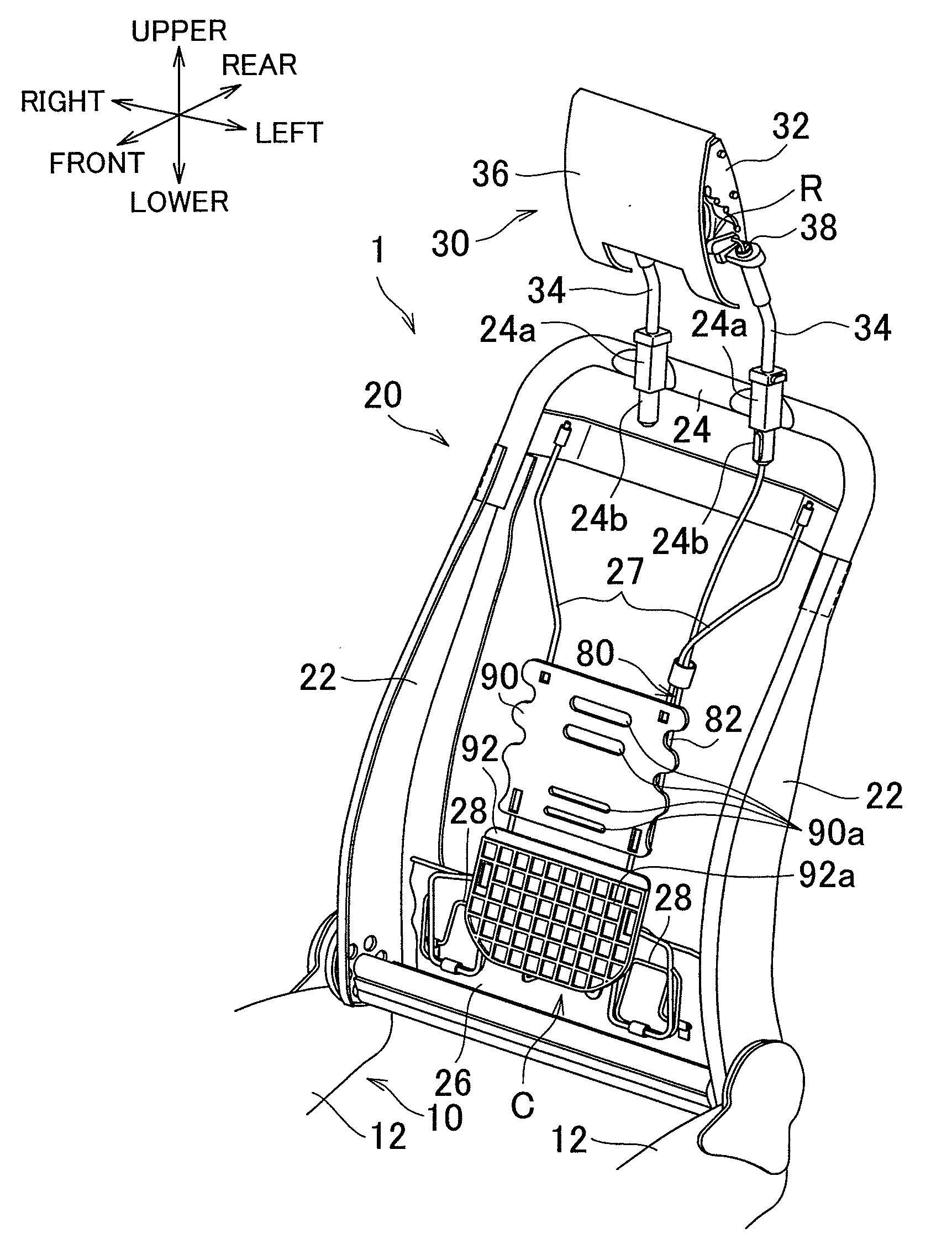Internal structure of seatback connected to active headrest
a technology of seatback and active headrest, which is applied in the direction of pedestrian/occupant safety arrangements, vehicle components, vehicle arrangements, etc., can solve the problems of insufficient function of headrests and inaccurate detection of load applied by occupants to seatbacks, so as to improve riding comfort of occupants, and accurate activation of active headrests
- Summary
- Abstract
- Description
- Claims
- Application Information
AI Technical Summary
Benefits of technology
Problems solved by technology
Method used
Image
Examples
Embodiment Construction
[0021]Embodiments of the present invention will be described below with reference to the drawings. A first embodiment is described with reference to FIG. 1 to FIG. 6. In FIG. 1, in order to clearly show the internal structure of a vehicle seat 1 that includes a seat cushion 10, a seatback 20, and an active headrest 30, cushion structures (e.g., a pad member of the seatback 20) and surface structures of these components are omitted, and only internal frame structures of these components are shown. In the following descriptions, the words “up”, “down”, “front”, “rear”, “left”, and “right” designate directions of “up”, “down”, “front”, “rear”, “left”, and“right” in the above drawings, or directions of “up”, “down”, “front”, “rear”, “left”, and “right” in terms of the vehicle seat 1 as a reference. The directions also apply to a second embodiment described later.
[0022]The overall configuration of the vehicle seat 1 according to the first embodiment will now be described. As shown in FIG...
PUM
 Login to View More
Login to View More Abstract
Description
Claims
Application Information
 Login to View More
Login to View More - R&D
- Intellectual Property
- Life Sciences
- Materials
- Tech Scout
- Unparalleled Data Quality
- Higher Quality Content
- 60% Fewer Hallucinations
Browse by: Latest US Patents, China's latest patents, Technical Efficacy Thesaurus, Application Domain, Technology Topic, Popular Technical Reports.
© 2025 PatSnap. All rights reserved.Legal|Privacy policy|Modern Slavery Act Transparency Statement|Sitemap|About US| Contact US: help@patsnap.com



